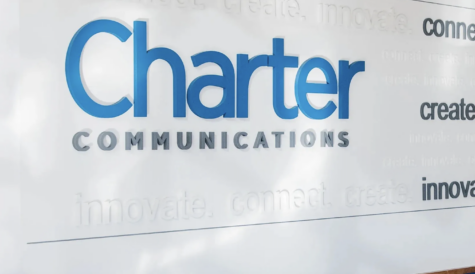The dilemma facing broadcasters
 How should national broadcasters respond to the ongoing decline in linear viewing and the rise of streaming?
How should national broadcasters respond to the ongoing decline in linear viewing and the rise of streaming?
Broadcasters have watched the rise of streaming with some trepidation. Even if Netflix CEO Reed Hastings’ frequent public predictions about the imminent death of linear TV can be absorbed with a pinch of salt, the data shows that younger audiences are much less likely than older folk to consume the output of public service broadcasters, let alone rely on over-the-air TV as their principal source of audiovisual entertainment.
One story this week illustrates the multiple challenges of the strategic choices adopted by broadcasters.
French newspapers reported that two of SVOD platform Salto’s three shareholders, TF1 and M6, have decided to sell their stakes. The third shareholder, France Televisions, had already tried to pull out earlier this year.
Building your own streamer was a formula adopted by the major French broadcasters after the UK’s BBC and ITV collaborated to launch the local UK version of streamer BritBox.
Neither platform has broken the mould or emerged as a serious competitor or peer of the major US streamers and BritBox is shortly to be folded into ITV’s expanded streaming offering ITVX.
In the case of Salto, launched after much delay in 2020, the platform failed to attract the number of subscribers anticipated. France Télévisions, the main force behind the project, decided to sell its stake earlier this year, leaving TF1 an M6 as the sole shareholders.
That sale was however contingent on the completion of the proposed merger of TF1 and M6, now abandoned.
TF1 and M6’s decision this week to sell up means that the service faces a real risk of being shut down if an alternative buyer cannot be found, leaving its 800,000 or so subscribers open to targeting by alternative providers.
One key problem with such services is that their backers are subject to pressure to maximise the value of their content meaning that their commitment to joint SVOD projects can be lukewarm if licensing to third parties promises a better return.
Salto and BritBox’s backers were also torn between throwing their lot in with a JV and boosting their own (wholly-owned) streaming offerings. TF1 has its own streaming service, MYTF1, and M6 recently launched a premium ad-free version of its own 6Play offering called 6Play Max.
In the UK, the BBC spent much of BritBox’s life building up its own iPlayer service. And following ITV’s acquisition of the BBC’s stake in the venture, the commercial broadcaster has moved towards building a broader hybrid free and paid-for offering under the ITVX brand.
These moves may in part reflect the current focus on advertising as opposed to subscription revenue and the feeling, whether justified or not, that subscription growth is flattening out. But they also highlight the weakness of the multiple ownership model for streaming services.
Those streaming services also suffer from a related challenge – their limited geographical reach. While the major Hollywood streamer can take advantages of global economies of scale in everything from technology platform to the content they commission, the BritBoxes and Saltos of the world are rather more constrained. Expansion of BritBox to Anglophone and some other countries can’t really compare to the global ambitions and reach of a Netflix or Disney+. And once again, the service’s backers are more likely than the deep-pocketed majors to hedge their bets by licensing content to the highest bidder to maximise their commercial revenues. They may even, in the case of public broadcasters, be mandated to do so. Or they may, in the case of commercial broadcasters, be under shareholder pressure to make every cent count.
If JVs are complicated, an alternative strategy – industry consolidation – is proving to be even more so.
In adopting this strategy, TF1 and M6 and their owners ran into an insurmountable regulatory obstacle in the shape of the requirement that they divest one of their main channels. Regulators are not necessarily wrong to think in terms of TV advertising as a distinctive market. Linear viewing is still the bulk of all viewing. But by the time they decide it’s OK to blur the boundaries between TV and digital, it is likely already to be too late for the broadcasters.
If in-country consolidation is not (yet) acceptable to regulators, cross-border mergers and acquisitions have also proved difficult to realise. MediaForEurope’s dogged efforts to consolidate broadcasters in Italy, Spain and Germany have run into multiple hurdles, including the rejection by some shareholders of its terms for the acquisition of Mediaset España as well as the hostility of Germany’s ProSiebenSat.1.
The jury also remains out on whether such mergers across national boundaries make commercial sense. Questions remain over whether there are sufficient synergies in content acquisition and technology platforms to justify such a combination.
One thing is certain: broadcasters face big challenges that go beyond the current difficult economic headwinds that have depressed ad markets. Competition from streamers will only intensify as the latter turn to advertising-supported SVOD and FAST to secure a return on their vast investment in content.



